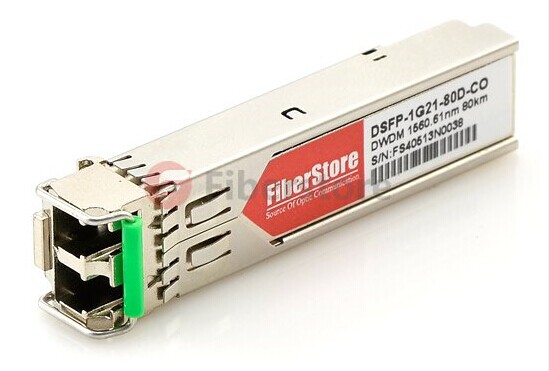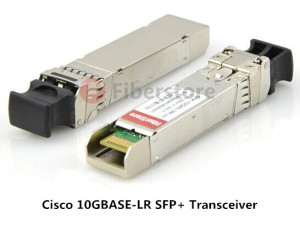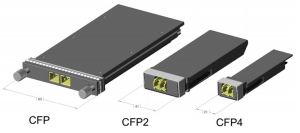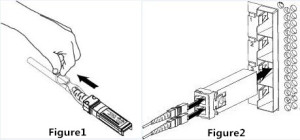What is DWDM SFP Transceiver
Dense wavelength division multiplexing (DWDM) is a kind of wavelength division multiplexing (WDM) technology used to increase bandwidth over existing fiber optic backbones. DWDM works by combining and transmitting multiple signals simultaneously at different wavelengths on the same fiber. It increases the capacity of embedded fiber by assigning incoming optical signals to specific wavelengths with a designated wavelength band and then multiplexing the resulting signals out onto one fiber. In effect, one optical fiber is transformed into multiple virtual optical fibers. So, if you were to multiplex eight optical carriers-48 signals into one fiber, you would increase the carrying capacity of that fiber from 2.5 Gb/s to 20 Gb/s. DWDM has the ability to transport up to 80 wavelengths in what is known as the Conventional band or C band spectrum, with all 80 channels in the 1550nm region. This technology can integrate with transceiver modules especially small form-factor pluggable (SFP) modules. DWDM SFP transceiver is a hot-swappable optical module used to connect cables to switches primarily in high-capacity long-haul networks. DWDM SFP transceiver can be utilized in DWDM SONET/SDH, Gigabit Ethernet and Fibre Channel applications.
Introduction of Cisco DWDM SFP Transceiver
Cisco DWDM SFP transceiver is one of the most popular kinds of compact DWDM SFP transceivers used in communications for both telecommunication and data communications. The Cisco DWDM SFP module is a hot-swappable input/output device that plugs into Gigabit Ethernet SFP ports or slots of a Cisco switch or router, linking the port with the network. This module is supported across a variety of Cisco switches, routers, and optical transport devices. In the process of transmitting data, the main function of DWDM SFP transceiver is to convert electrical bits to optical pulses. It can transmit and receive multiple signals with different wavelengths at the same time, making fiber to fiber configuration possible.


How to Install DWDM SFP Transceiver
To install DWDM SFP transceiver, you are supposed to follow three steps:
Step1: Remove the DWDM SFP module from its protective packing (Do not remove the optical bore dust plug until you are directed to do so later in the procedure).
Step2: Check the label on the SFP transceiver module body to verify that user has the correct model for the network. (DWDM SFP module can be identified by its label which lists the SFP model and the wavelength).
Step3: Verify that the bale clasp on the front of the SFP module is closed before inserting the SFP module.
Step4: Align the DWDM SFP module in front of the slot opening, remove the dust plug from the SFP transceiver module optical bores and immediately slide the SFP module into the slot, and verify that whether the connect on the module snaps into place in the rear of the slot.
Fiberstore’s DWDM SFP transceivers provide a high-speed serial link at signaling rates from 100 Mbps to 2.5Gbps. These DWDM SFP modules meet the requirements of the IEEE802.3 Gigabit Ethernet standard and ANSI Fiber Channel specifications. We provide many types of DWDM SFP transceivers among which there is a kind designed for single mode fiber and operates at a nominal DWDM wavelength from 1530.33nm to 1561.41nm as specified by the ITU-T. For example, DWDM-SFP10G-56.55 provides a compatible data-rate of 10 Gbps with 1556.55nm for distances up to 80 km. And DWDM-SFP10G-61.41 provides a compatible data-rate from 9.9 Gbps to 11.1 Gbps with 1561.41nm for distances up to 80 km. Both of them are designed to deploy in the DWDM networking equipment in metropolitan access and core networks.
Originally published at http://www.sfp-transceiver-modules.com/wiki_list





